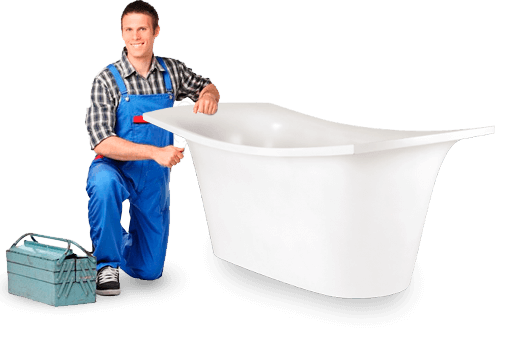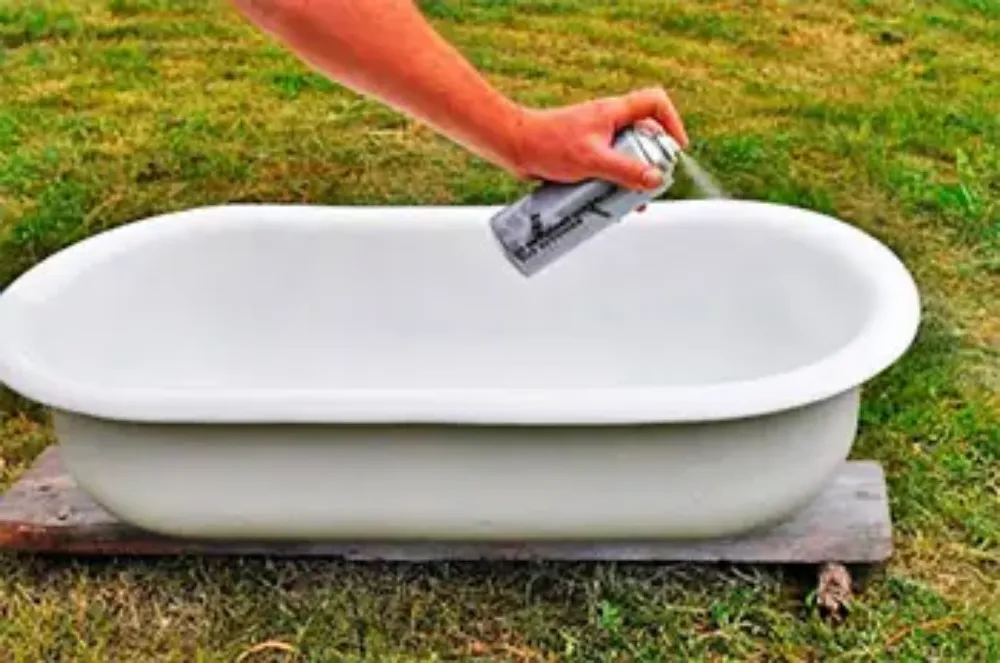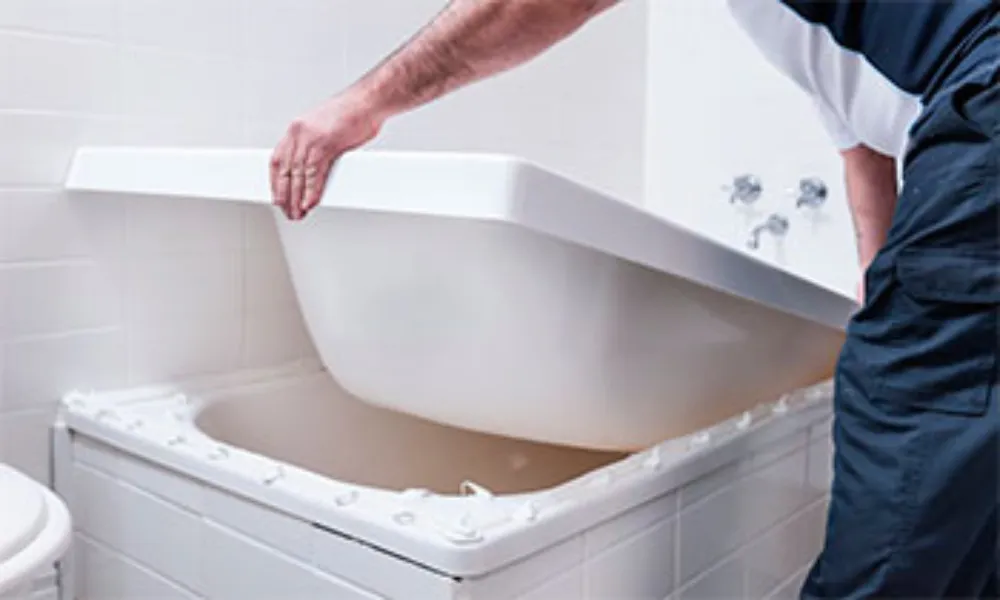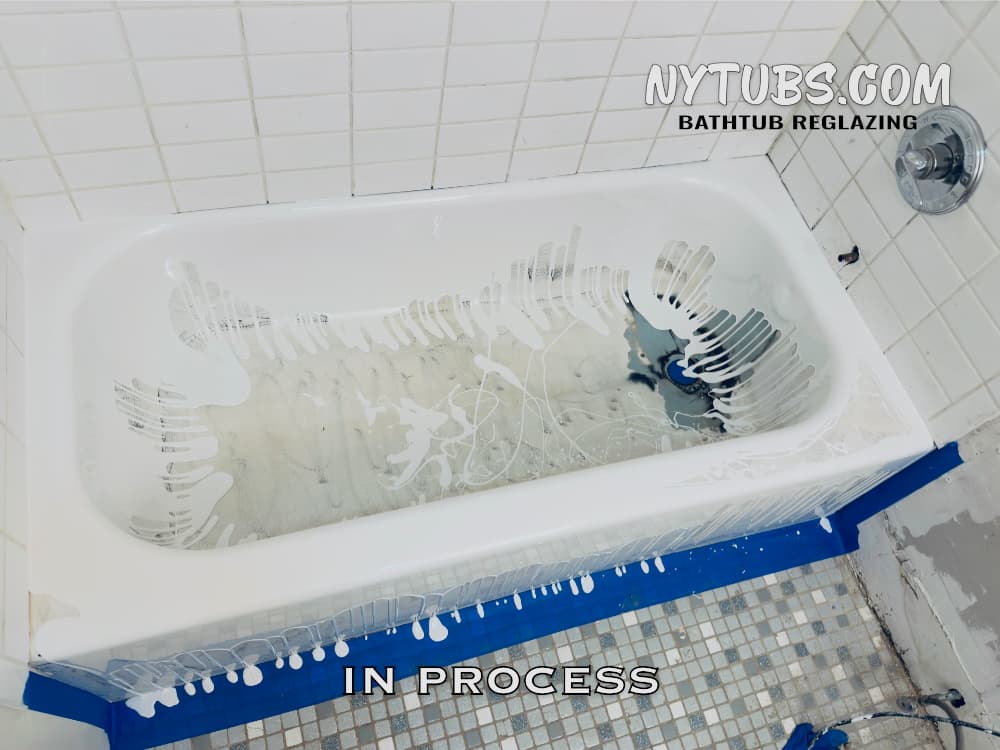Bathtub Refinishing Methods
If you have an old, damaged tub, your first thought might be to buy a new one. But that may not be the best option. Why not? Well, consider what is involved in tearing it out and replacing it.

It’s extremely heavy. So heavy, in fact, that it takes at least two people to carry it if you decide to do it yourself. And if you live on an upper floor, that means navigating stairs or an elevator. Not fun.
It’s expensive. A new tub costs a lot of money. And unless you want to do it yourself, you’ll have to add in the cost of labor for removing the old tub and installing a new one.
It’s inconvenient. Having your bathroom torn apart while the project is in process is time-consuming, besides making a mess. And if your walls or other fixtures are damaged, that increases the cost and the time involved.
That makes the whole process seem so overwhelming that you might feel like forgetting the whole idea and resigning yourself to living with a less-than-desirable bathtub. But don’t give up! There’s a simple, modern solution that gives your tub a whole new life, and it’s quick, clean and affordable. It will transform your bathtub and give it a sleek, glossy finish that’s durable and easy to keep clean. You’ll fall in love with your bath all over again.
If you have an older bathtub made of cast iron or steel, you have a great fixture. These materials are thick, durable and reliable. It’s almost impossible to damage the bathtub itself because it’s so strong. Unfortunately, the enamel coating on the tub is not quite as strong. It can be chipped or cracked due to wear and tear or from items being dropped, and it can get stains or discoloration from minerals in the water or just from age.
Your cast iron or steel tub is worth keeping, so restoring the surface is a great idea. But just how is that done? And what are the pros and cons of each technique?
There are several different bathtub refinishing methods. Let’s explore and compare three of the most popular ones to see which offers the best solution for you
.
Spray-On Enamel Application
What it is: This method involves spraying the surface of the tub with spray-on enamel. This enamel has a strong, dense consistency, so it is applied in a thick layer that can cover defects such as discoloration and rust, as well as rough spots or dull patches.
Pros: This method has been popular for many years because it is an efficient method for quickly and easily refinishing the surface of the tub. DIYers find that it is a fairly easy process, and the price of the material is affordable. It’s a minimal investment in time and money for sprucing up your bathtub.
Cons: Spray-on enamel does not provide a permanent, long-term solution because the finish can quickly wear out, sometimes within a year. In addition, if your tub has more than superficial cosmetic defects, this method will not repair deep damage
.
Chips, cracks and peeling go beyond the surface, so spray-on or brush-on enamel will not completely fill in the damage and renew the finish.
If spray-on enamel is applied with a brush or roller, these can leave lint or brush fibers behind that spoil the smooth surface. Also, the material is not thick and pliable enough to give a consistently smooth, uniform finish.
Compared to more modern methods, spray-on enamel is outdated because it requires several layers of application, and although it’s dry to the touch in 2 days, it’s important to allow up to 7 days for full polymerization and optimal results. During that time, the bath is not usable, and it also comes with a strong chemical smell similar to that of paint.

Bottom line: Spray-on enamel can be an option if you’re looking for a relatively easy and inexpensive cosmetic repair in a vacant home. Otherwise, there are better bathtub refinishing method options that are quicker, more comprehensive, and more durable.
| CRITERIA | Spray-On Application | Pour-On Application (Our Method) |
| Lifespan | 1-3 years | |
| On-Site Work Time | ~5 hours | |
| Odorless | ||
| Ready to Use | ~48 Hours | |
| Long-Term Value | Lower initial cost, requires frequent re-application | Lasts up to 5x longer, better investment |
Bathtub Liner Installation
What it is: A bathtub liner (also called a bathtub insert) is a durable plastic product that is made to fit your tub. It is inserted into the interior of tub and glued to the surface.
Pros: This method provides good results because regardless of the condition of the bathtub, the liner completely covers the surface without any need for repairing the original tub.
An experienced technician can install a bathtub liner in a short amount of time. The down time is minimal, and the tub can often be used within a couple days, which is convenient for residents that want a quick solution.
This method is also durable, with the liner lasting 5-10 years with proper care and maintenance.

Cons: The durability of the bathtub liner depends greatly on the skill of the installer, who needs to have the necessary training and experience to properly set the liner. It takes meticulous attention to detail to assure the best results. Even small installation errors and oversights can compromise the success of the project and result in breakage of the liner. Also, the cost of liners is significantly higher compared to other methods.
Bottom Line: Bathtub liners can be a good option for long-term results. However, they should be installed by an experienced professional. Also, the cost is significantly higher than with other methods.
| CRITERIA | Bathtub Liner | Pour-On Application (Our Method) |
| Durability & Issues | Up to 10 years. Prone to water-trapping & mold. | |
| Installation Process | 2-3 Day multi-step process | |
| Ready to Use | Immediately | |
| Impact on Tiles | High risk of tile damage | |
| Overall Value | High initial cost. Feels hollow & can crack. | Superior value. Solid, integrated finish. |
Pour-On Enamel Restoration
What it is: After preparing the surface, the pour-on application method coats the surface of the tub, leaving a smooth, durable finish. It’s one of the favorite bathtub refinishing methods of both homeowners and professionals alike.
Pros: The original enamel coating is removed, any damage or imperfections are repaired, and it is sanded so the surface is smooth. It is then disinfected and degreased to provide superior adhesion of the material. This detailed process repairs even badly damaged bathtubs.
The pour-on coating forms a perfectly smooth layer with a brilliant, snow-white shine. Not only does it brighten up the whole bathroom, it’s durable and resilient, and it resists stains and damage.
It’s a quick procedure, so residents don’t have the inconvenience of a long, drawn-out bathtub replacement process. The refinishing specialist completes the entire project in 3-4 hours, and after drying for about 24 hours, your newly finished bathtub is ready to use and enjoy.
This advanced pour-on material is also environmentally friendly. It’s safe for you and your family with zero VOC status. And there is no chemical smell during or after the process, so you don’t have to worry about the safety of children or pets.
Best of all, you don’t have to remove and replace your existing tub. Our highly-trained, experienced professionals take great care to prevent damage to the surrounding surfaces, and they leave the work area clean and tidy.
All types of tubs can be restored with this advanced technique. Even the most badly damaged tubs are no problem. Unique sizes and shapes do not matter. All types of bathtubs – from classic cast iron to modern hot tubs – are excellent candidates for this bathtub refinishing method. And besides the classic white, you can choose colored pigments to add a designer touch to your bathtub.
With our skilled craftsmen using superior materials, the pour-on method can provide a beautiful, durable finish that lasts 7–15 years.

Cons: Well, we really can’t think of any!
Bottom Line: The pour-on method provides speed, safety, affordability, convenience, beauty, and durability. What’s not to love?
Key takeaway: Compare for yourself:
- Cost
- Convenience
- Time
- Dependability

We’re sure you’ll agree that the pour-on bathtub refinishing method is the clear winner for your bathtub renovation. Call us or fill out the form below to get started on your bathtub transformation today.

A bathtub refinishing expert with over 10 years of experience and founder of CityTub Inc., specializing in eco-friendly pour-on reglazing methods. Shares hands-on knowledge, techniques, and insights to help achieve professional, long-lasting results.

